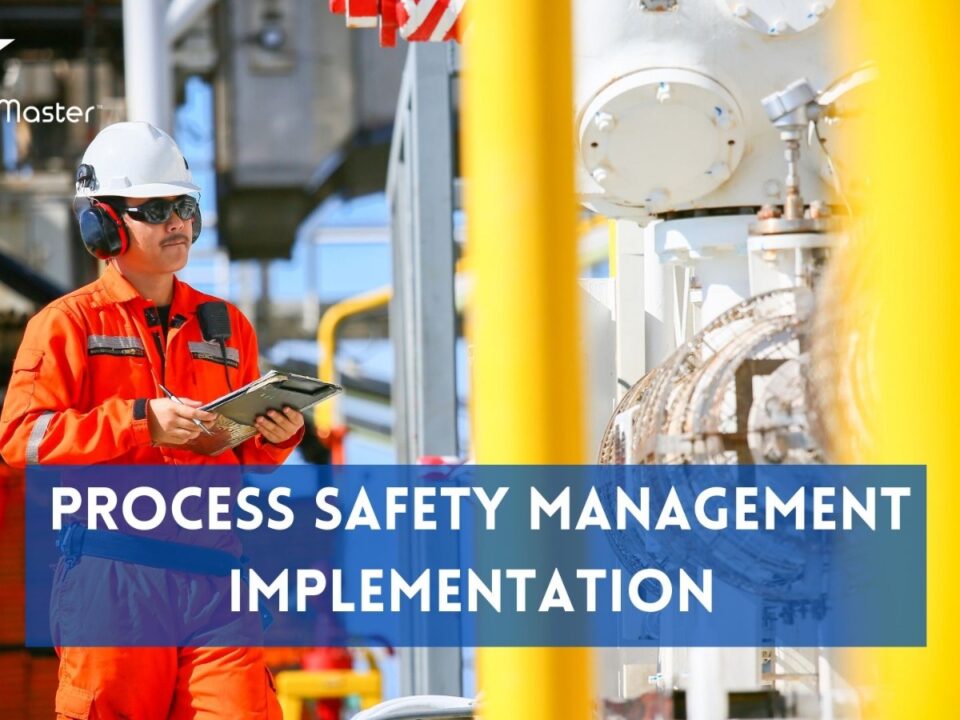Uncovering Potential Hazards: The Role of Electrical Safety Audits in Improving Workplace Safety in Indian Manufacturing Industries

Delving into Mechanical Integrity and Quality Assurance Programs: A Prerequisite for Success in Process Industries
November 22, 2024
An In-Depth Analysis of LOPA & SIL Study for the Process Industry in India: Ensuring Safety and Reliability
November 25, 2024In this article, we delve into the often overlooked yet significant aspect of workplace safety in Indian manufacturing industries – electrical hazards. With a sharp focus on the pivotal role of electrical safety audits, we aim to uncover potential dangers lurking within these industrial settings. From outdated wiring systems to malfunctioning equipment, we shed light on the risks that employees face daily. Furthermore, we enlighten readers on what they can expect from these audits and the transformative impact they can have on overall workplace safety. Join us as we promise to uncover invaluable insights and strategies to ensure a safer working environment for all.
Introduction
Uncovering Potential Hazards: The Role of Electrical Safety Audits in Improving Workplace Safety in Indian Manufacturing Industries Electricity, an indispensable source of power in modern manufacturing industries, is both a boon and a potential threat. While it fuels production and drives innovation, inadequate electrical safety measures can lead to catastrophic accidents, risking the lives of workers and jeopardizing business operations. Recognizing the critical importance of ensuring a safe working environment, Indian manufacturing industries are increasingly turning to electrical safety audits as a proactive approach to identify potential hazards and enhance workplace safety standards
The Importance of Electrical Safety in Indian Manufacturing Industries
In Indian manufacturing industries, the significance of electrical safety cannot be overstated. The bustling factories and production units rely heavily on electrical equipment and systems to keep operations running smoothly. However, amidst this reliance lies a potential for hazards that can jeopardize not only the productivity but also the safety of workers. Electrical accidents can have devastating consequences, ranging from severe injuries to loss of life and property damage. In India, where manufacturing industries are thriving, it is crucial to prioritize electrical safety measures to ensure a secure working environment for employees.
The implementation of robust electrical safety practices not only safeguards workers’ well-being but also enhances overall productivity and operational efficiency. By proactively addressing potential electrical hazards through audits, organizations can identify risks and take necessary preventive measures.
By emphasizing the importance of electrical safety in Indian manufacturing industries, we aim to highlight the need for comprehensive approaches that encompass regular audits as an integral part of workplace safety initiatives. Through proper adherence to recommended guidelines and standards, we can foster a culture that values employee well-being while instilling confidence in the industry’s growth prospects.
Understanding Electrical Safety Audits
Electrical safety audits serve as a vital tool for comprehensively assessing and managing potential hazards in Indian manufacturing industries. These audits involve a systematic review of electrical infrastructure, equipment, and practices to identify any deviations from established safety standards. By evaluating the effectiveness of existing safety measures, electrical safety audits help organizations in proactively mitigating risks and ensuring compliance with regulatory requirements. During an audit, trained professionals perform detailed inspections of electrical systems, including wiring, circuit breakers, grounding systems, and protective devices. They meticulously examine equipment maintenance records and documentation to assess adherence to industry best practices. The audit process also involves interviews with employees regarding their knowledge of electrical safety procedures and training received.
By conducting regular electrical safety audits, organizations gain valuable insights into potential hazards that may pose significant risks to employees’ well-being. This comprehensive understanding allows them to implement focused measures that address these risks effectively. Ultimately, these audits contribute towards creating a safer work environment where employees can perform their duties without fear or undue exposure to electrical hazards.
The Role of Electrical Safety Audits in Identifying Potential Hazards
The Role of Electrical Safety Audits in Identifying Potential Hazards: Electrical safety audits play a paramount role in uncovering potential hazards lurking within the manufacturing facilities of India. These audits meticulously scrutinize the electrical infrastructure, equipment, and practices to identify any existing or potential risks. By conducting comprehensive inspections and examinations, these audits reveal hidden dangers that may have gone unnoticed otherwise.
During these audits, highly trained professionals meticulously assess electrical systems, looking for faulty wiring, inadequate grounding, overloaded circuits, or outdated equipment. Through specialized testing methodologies and advanced diagnostic tools, they unearth potential hazards such as short circuits, arc flashes, or electrical fires that could endanger the lives of both employees and property. This process ensures that every nook and cranny of the electrical system is thoroughly examined to guarantee a safe working environment.
Moreover, electrical safety audits delve beyond merely identifying hazards; they also provide valuable insights into the root causes behind them. By analyzing maintenance records and conducting interviews with employees at all levels within the organization, auditors uncover systemic issues that contribute to hazardous conditions. This holistic approach not only helps rectify immediate dangers but also addresses underlying factors that can lead to long-term safety improvements.
By proactively identifying potential hazards through meticulous inspections and assessments, electrical safety audits empower manufacturing industries in India to take prompt corrective actions. This proactive stance ensures that necessary measures are implemented swiftly to mitigate risks before they escalate into accidents or injuries. Ultimately, this proactive approach fosters a culture of safety where employees feel protected and empowered while working towards organizational success.
Compliance with Electrical Safety Standards: A Key Objective of Audits
Compliance with Electrical Safety Standards: A Key Objective of Audits – Ensuring adherence to electrical safety standards is a paramount objective of conducting thorough audits within Indian manufacturing industries. These audits serve as a comprehensive assessment tool, meticulously examining the various components and practices in place to prevent potential hazards. By scrutinizing electrical installations, wiring systems, grounding mechanisms, and protective devices, auditors seek to guarantee that all safety measures are in alignment with recognized industry standards.
The significance of compliance with electrical safety standards cannot be overstated. It not only prevents accidents and injuries but also promotes a culture of responsibility and accountability within the workplace. Through rigorous inspections and meticulous evaluations, audits identify any gaps or deviations from established norms that may compromise employee safety. By rectifying these shortcomings promptly, organizations can not only comply with legal requirements but also foster an environment where employees feel secure and valued.
By prioritizing compliance with electrical safety standards through audits, Indian manufacturing industries can create an atmosphere where safety becomes ingrained in every aspect of their operations. Such proactive measures not only protect the well-being of workers but also enhance productivity levels as employees feel assured that their organization genuinely cares for their welfare. Ultimately, by embracing stringent safety protocols as an essential part of their business ethos, companies reinforce a positive image while demonstrating their commitment towards creating sustainable workplaces that prioritize the health and well-being of employees above all else.
Assessing the Effectiveness of Existing Electrical Safety Practices
Assessing the Effectiveness of Existing Electrical Safety Practices: As we delve into the realm of electrical safety, it becomes imperative to evaluate the efficacy of existing practices in mitigating potential hazards. The assessment of current electrical safety measures involves a meticulous examination of their implementation, adherence, and impact on workplace safety. By conducting comprehensive audits, organizations can gain insightful knowledge about the strengths and weaknesses of their safety protocols.
One aspect that warrants scrutiny is the alignment between documented safety procedures and actual practices on the ground. It is not uncommon for organizations to have well-drafted policies that are not consistently followed or fully understood by employees. By evaluating this alignment, companies can identify gaps in communication or training that may contribute to unsafe practices.
Moreover, assessing the effectiveness also entails analyzing incident data to ascertain whether there is a recurring pattern or specific areas where accidents frequently occur. This analysis can reveal potential shortcomings in preventive measures and highlight areas where additional emphasis should be placed.
By thoroughly evaluating existing electrical safety practices, organizations can develop targeted improvement strategies that address identified weaknesses. Implementing these improvements will not only enhance workplace safety but also foster a culture of continuous learning and improvement. Ultimately, this ensures that employees are empowered with the knowledge and resources necessary to create a safer working environment for themselves and their fellow colleagues.
Mitigating Risks: Recommendations from Safety Audit Findings
Mitigating Risks: Recommendations from Safety Audit Findings – After conducting a thorough electrical safety audit, it is crucial to address the identified hazards and develop effective strategies for risk mitigation. The recommendations derived from safety audit findings serve as crucial guidelines to ensure a safer work environment.
One key recommendation is to prioritize regular equipment inspection and maintenance. By implementing a proactive maintenance program, potential risks can be identified and addressed before they escalate into major hazards. This approach not only reduces the chances of electrical failures but also promotes longevity and reliability of equipment, ultimately saving costs for the organization.
Another important recommendation is to enhance employee training programs. Providing comprehensive training on electrical safety protocols equips workers with the knowledge and skills needed to make informed decisions when working with electricity. By fostering a culture of awareness and responsibility, employees become active participants in maintaining a safe workplace, reducing accidents, and boosting overall productivity.
Furthermore, it is essential to establish clear communication channels between management and employees regarding safety concerns. Encouraging an open dialogue allows for prompt reporting of potential hazards or malfunctioning equipment, ensuring that corrective actions are taken swiftly. Emphasizing accountability at all levels reinforces a sense of collective responsibility towards safety.
By implementing these recommendations derived from safety audit findings, organizations can create an environment where workplace accidents are significantly reduced. Adopting proactive measures not only safeguards employee well-being but also enhances operational efficiencies and productivity levels. Through continuous improvement efforts driven by safety audits, Indian manufacturing industries can foster sustainable growth while prioritizing the welfare of their workforce.
Improving Workplace Safety Culture through Electrical Safety Audits
Improving Workplace Safety Culture through Electrical Safety Audits: By conducting regular electrical safety audits, Indian manufacturing industries have the opportunity to foster a strong culture of workplace safety. These audits not only focus on identifying potential hazards but also play a vital role in promoting a collective responsibility towards electrical safety among employees.
One way to improve workplace safety culture is by creating awareness about the importance of electrical safety through training programs and workshops. By equipping employees with the knowledge and skills necessary to identify and address electrical hazards, companies empower their workforce to actively contribute to a safer work environment.
Furthermore, integrating feedback from employees during the audit process can enhance ownership and engagement. Actively involving them in hazard identification exercises and soliciting their suggestions for improvement fosters a sense of belongingness and instils confidence in the organization’s commitment to employee well-being. Together, these efforts create an optimistic atmosphere where everyone feels valued and motivated to prioritize electrical safety in their day-to-day activities.
Through continuous reinforcement of best practices identified during audits, manufacturing industries can cultivate a workplace culture that values safety above all else. This not only reduces the risk of accidents but also establishes trust between management and employees, leading to higher job satisfaction and increased productivity. Ultimately, investing in improving workplace safety culture through electrical safety audits ensures a brighter future for both businesses and workers alike.
Integrating Electrical Safety Audits into Routine Maintenance Activities
Integrating Electrical Safety Audits into Routine Maintenance Activities: Incorporating electrical safety audits into routine maintenance activities is a proactive approach that can greatly enhance workplace safety in Indian manufacturing industries. By intertwining safety assessments with regular maintenance tasks, the potential hazards associated with electrical systems can be systematically identified and addressed.
One way to achieve this integration is by conducting pre-maintenance safety checks that involve assessing the condition of electrical equipment before any maintenance work begins. This ensures that potential dangers are identified and rectified prior to the commencement of repair or servicing activities. These pre-maintenance safety checks can include visual inspections, testing of electrical circuits, and identifying potential points of failure.
Moreover, integrating safety audits into routine maintenance activities enables organizations to instil a culture of continuous improvement within their workforce. By training maintenance personnel in proper electrical safety practices and equipping them with the necessary tools, they become more adept at recognizing potential hazards and taking immediate corrective actions. Such an approach fosters a sense of empowerment, as employees actively contribute towards creating a safer work environment.
In summary, integrating electrical safety audits into routine maintenance activities enhances workplace safety by proactively identifying hazards before they escalate. This not only minimizes the risk of accidents but also promotes a culture of vigilance and responsibility among employees. By intertwining these two crucial aspects, Indian manufacturing industries can achieve optimal efficiency while ensuring the well-being of their workforce.
Training and Education: Empowering Employees for Electrical Safety
Training and Education: Empowering Employees for Electrical Safety – In order to create a safe work environment, it is essential to empower employees with the knowledge and skills necessary for electrical safety. Training programs should cover a wide range of topics, from basic electrical concepts to specific safety procedures. By equipping workers with this vital information, they can become active participants in maintaining a secure workplace.
Training sessions should incorporate hands-on activities and interactive discussions to enhance employee engagement. Through practical exercises, workers can gain practical experience in identifying potential electrical hazards and implementing appropriate safety measures. Moreover, fostering an environment where questions are encouraged ensures that employees feel comfortable seeking clarification or sharing their concerns.
To further emphasize the importance of electrical safety, educational materials such as posters, brochures, and digital resources can be provided to reinforce training concepts. Regular workshops or refresher sessions should also be conducted to keep employees up-to-date with any changes in safety regulations or best practices.
By investing in extensive training and education initiatives, companies demonstrate their commitment to the well-being of their workforce. When employees feel valued and empowered through knowledge acquisition, they are more likely to prioritize safety in their day-to-day activities. Ultimately, this culture of vigilance fosters a sense of collective responsibility among workers and contributes to a safer working environment for all.
Monitoring and Continuous Improvement: Sustaining Safety Measures
Monitoring and Continuous Improvement: Sustaining Safety Measures. In the realm of workplace safety, it is not enough to simply implement safety measures and conduct audits. To truly enhance electrical safety in Indian manufacturing industries, a robust system of monitoring and continuous improvement must be established. This section explores the significance of sustaining safety measures through regular monitoring and outlines effective strategies for fostering a culture of ongoing improvement.
One key aspect of monitoring involves conducting routine inspections to ensure that all electrical equipment is in optimal condition. This includes regular checks on wiring systems, circuit breakers, grounding mechanisms, and protective devices. By closely monitoring these elements, potential hazards can be identified early on, preventing accidents before they occur.
Furthermore, establishing a feedback loop with employees plays a crucial role in maintaining safety measures. Encouraging workers to report any electrical concerns or near misses fosters a sense of ownership over their own safety. This not only helps in identifying latent risks but also empowers employees to actively participate in the continuous improvement process.
By prioritizing the culture of continuous improvement and investing resources into ongoing monitoring efforts, Indian manufacturing industries can cultivate an environment where electrical safety becomes second nature. Through this commitment to sustained vigilance, accidents are minimized, productivity thrives, and employees can go about their work with confidence and peace of mind. Together, let us pave the way towards safer workplaces for all.
Benefits of Regular Electrical Safety Audits: A Case Study
Incorporating regular electrical safety audits into the workplace not only helps identify potential hazards but also brings forth substantial benefits for Indian manufacturing industries. Let us delve into a fascinating case study that highlights the positive outcomes of such audits. The case study revolves around a renowned manufacturing plant in Gujarat, India. After implementing a comprehensive electrical safety audit program, the facility experienced a significant reduction in electrical incidents and accidents. This result can be attributed to the thorough examination of equipment, wiring systems, and adherence to safety protocols during the audit process.
Moreover, the implementation of recommendations stemming from the audit findings led to enhanced awareness and knowledge among employees regarding electrical safety practices. By conducting training sessions and workshops, employees were empowered with practical skills that enabled them to identify potential dangers and take appropriate preventive measures. Consequently, this cultivates a safer work environment where every individual actively contributes to maintaining electrical safety standards.
The success of this case study demonstrates that regular electrical safety audits not only mitigate risks but also foster a positive workplace culture cantered around employee well-being. By instilling confidence through increased understanding and providing actionable solutions, these audits create an environment where individuals feel motivated to prioritize their own safety as well as their colleagues’. Ultimately, this serves as a catalyst for sustained growth and development within Indian manufacturing industries.
Conclusion
In conclusion, the implementation of electrical safety audits in Indian manufacturing industries is a crucial step towards enhancing workplace safety and mitigating potential hazards. By systematically assessing the electrical infrastructure, identifying risks, and recommending effective measures, these audits empower organizations to create a safer working environment. As industries prioritize compliance with safety standards and embrace a proactive approach to risk management, they can foster a culture of safety that prioritizes the well-being of employees. Through regular monitoring, continuous improvement, and employee education, Indian manufacturing industries can pave the way for a future where workplace accidents related to electrical hazards become obsolete.




